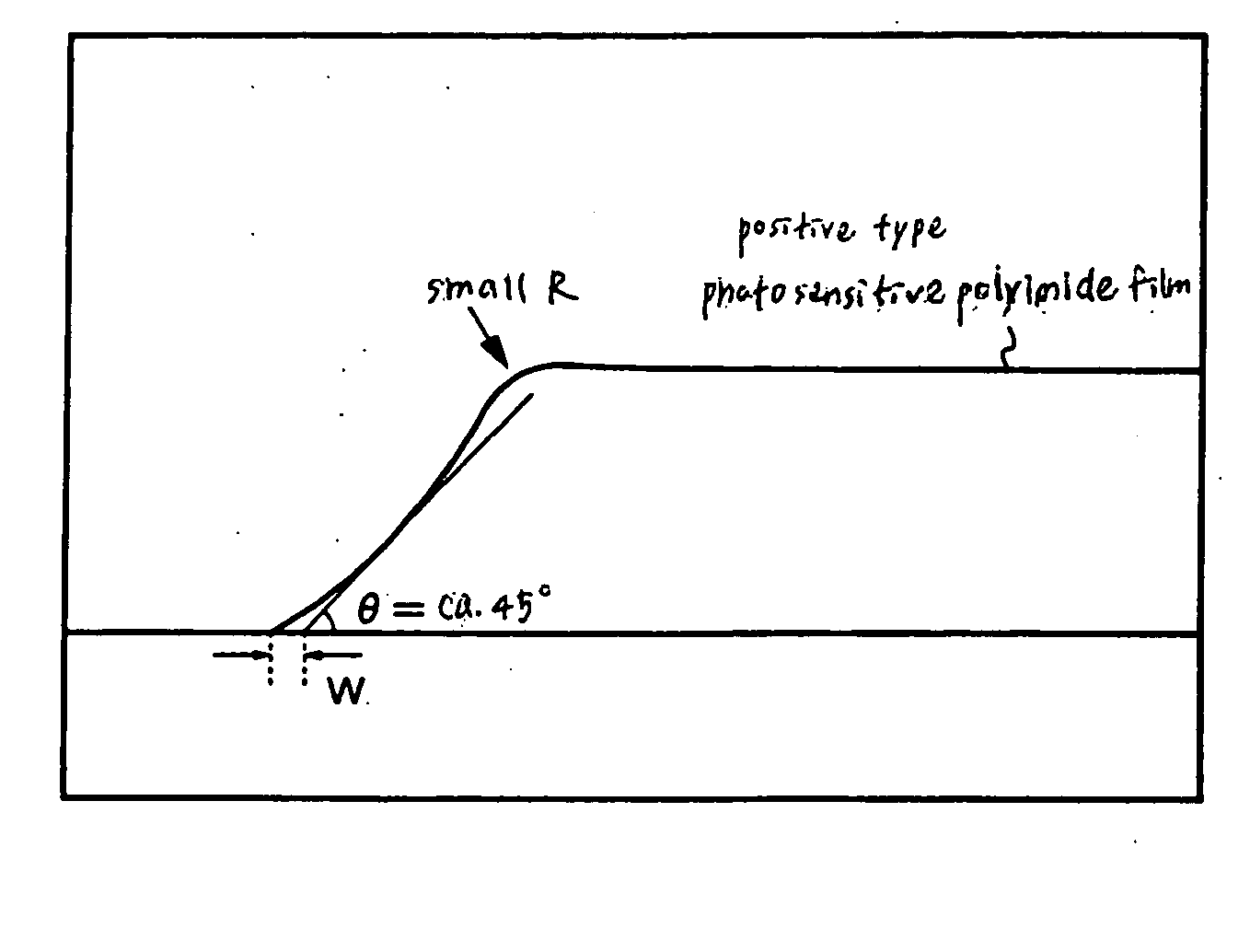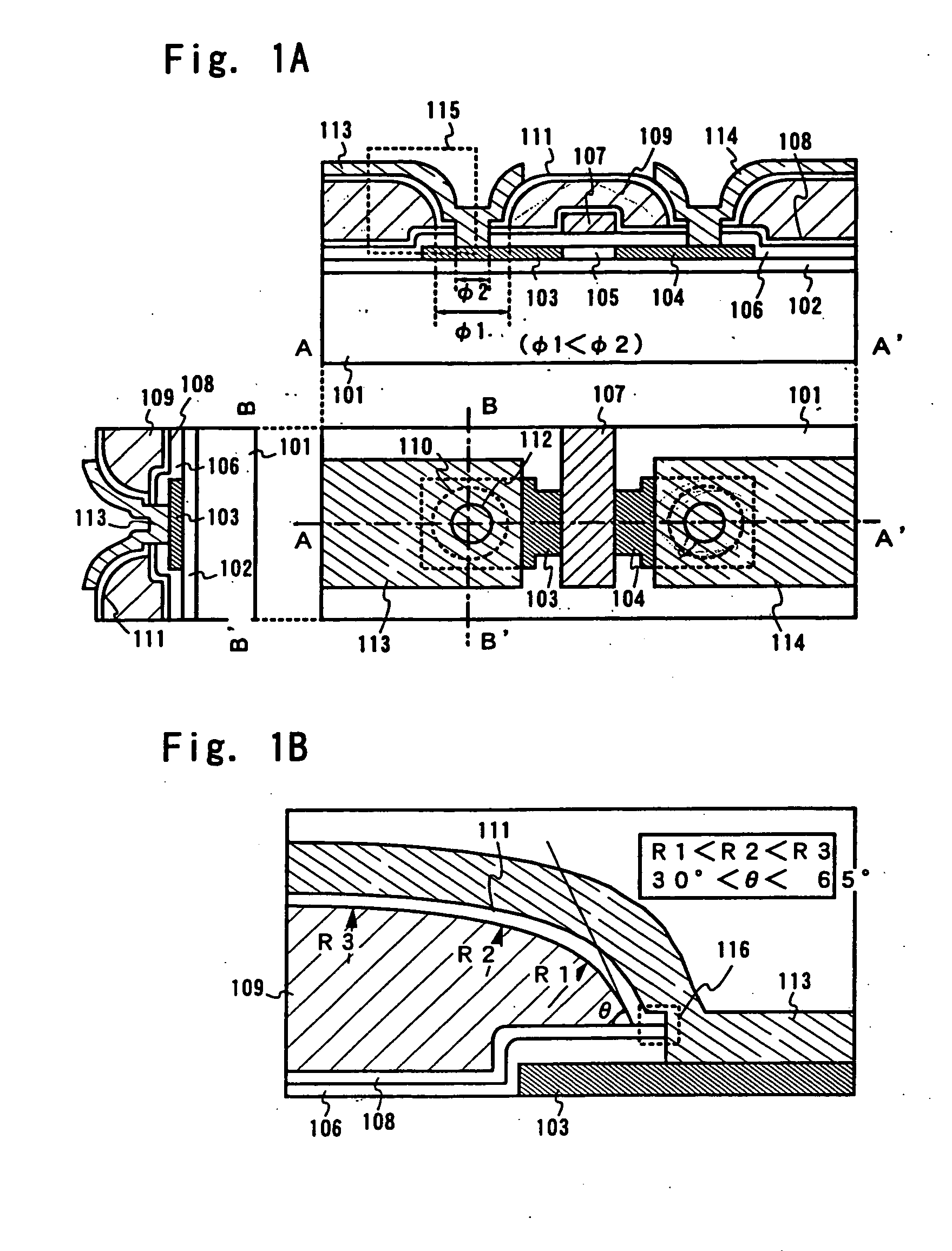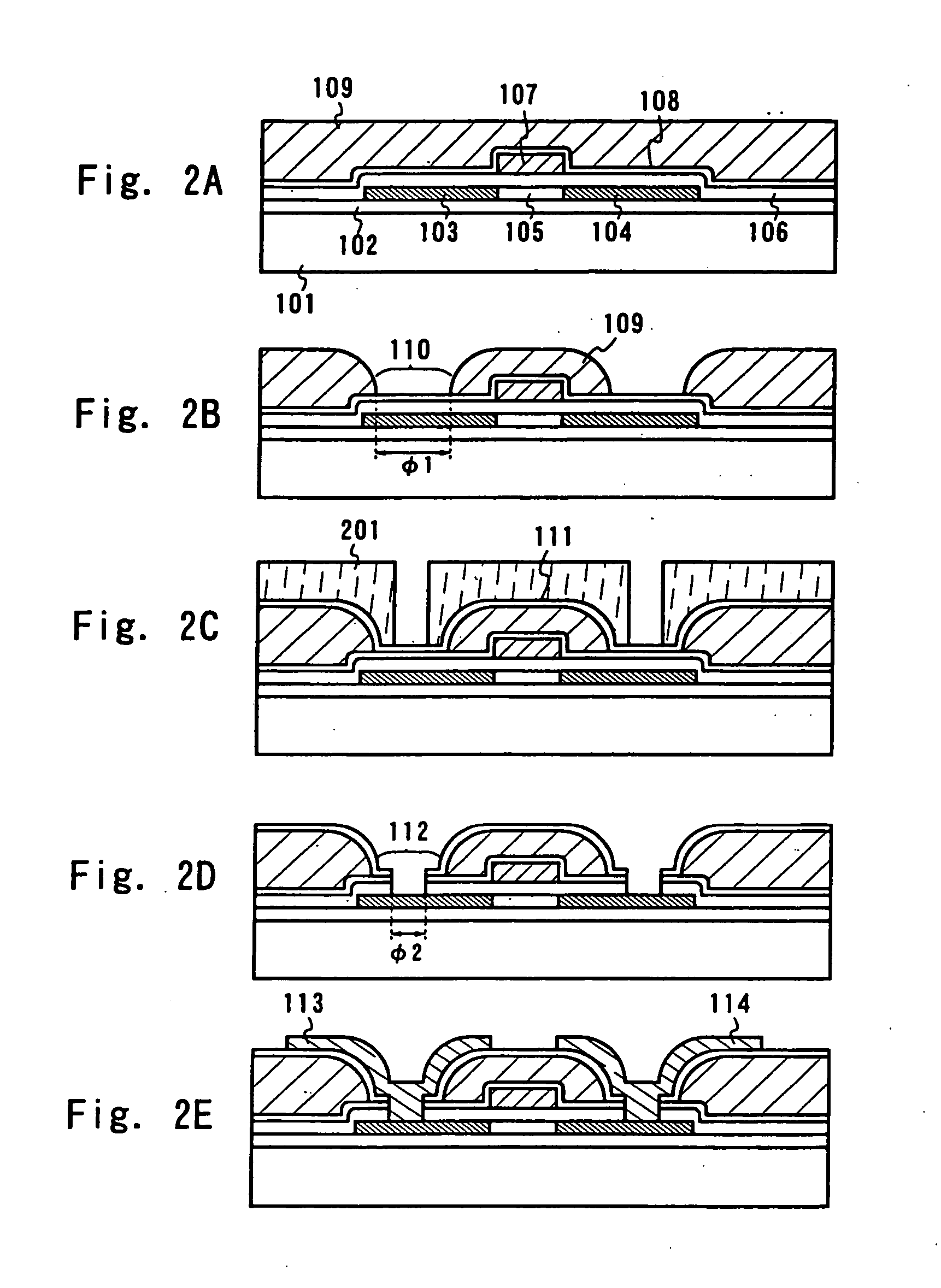Semiconductor element and display device using the same
- Summary
- Abstract
- Description
- Claims
- Application Information
AI Technical Summary
Benefits of technology
Problems solved by technology
Method used
Image
Examples
embodiment 1
[0052] In this embodiment, an example in which the formation position of the first opening portion 110 is changed in FIGS. 1A and 1B will be described using FIGS. 8A and 8B. Note that FIGS. 8A and 8B each show a cross sectional structure immediately after the formation of the second opening portion. In addition, the reference symbols used in FIGS. 1A and 1B are referred to if necessary.
[0053] In FIG. 8A, reference numeral 801 denotes a first opening portion having a diameter of φ1 and 802 denotes a second opening portion having a diameter of φ2. A characteristic in FIG. 8A is that the first opening portion 801 is provided to protrude from the end portion of the source region 103. The photosensitive organic resin film 109 can be formed in a position as indicated in this embodiment because the first passivation film 108 becomes an etching stopper, thereby stopping the progress of etching. In addition, in FIG. 8B, reference numeral 803 denotes a first opening portion having a diameter...
embodiment 2
[0055] In this embodiment, an example in which the present invention is applied to a light emitting device such as an EL display device will be described. FIG. 9A is a plan view of a pixel of the light emitting element (note that a state up to the formation of a pixel electrode is indicated), FIG. 9B is a circuit diagram thereof, and FIGS. 9C and 9D each are a cross sectional view along a line A-A′ or B-B′.
[0056] As shown in FIGS. 9A and 9B, a display portion of the light emitting device includes a plurality of pixels which are surrounded by gate wirings 951, data wirings 952, and power source wirings (wirings for supplying a constant voltage or a constant current) 953 and arranged in matrix. In each of the pixels, a TFT 954 serving as a switching element (hereinafter referred to as a switching TFT), a TFT 955 serving as means for supplying a current or a voltage for producing light emission of an EL element (hereinafter referred to as a driver TWT), a capacitor portion 956, and an...
embodiment 3
[0077] In this embodiment, an example is indicated in which a connection structure between the drain wiring 921 and the pixel electrode 958 is modified in the light emitting device described in Embodiment 2. Note that the fundamental structure is not changed as compared with that shown in FIG. 9C. Thus, in this embodiment, reference symbols are provided to only necessary portions and the description will be made.
[0078] As shown in FIG. 11A, a pixel electrode 501 made from an oxide conductive film is formed and then a drain wiring 502 is formed, so that a structure in which the drain wiring 502 is in contact with the pixel electrode 501 so as to cover the end portion thereof is obtained. When such a structure is obtained, the pixel electrode 501 may be formed after the formation of a second opening portion 503. Alternatively, the second opening portion 503 may be formed after the formation of the pixel electrode 501. In any case, even when dry etching processing is conducted, the ph...
PUM
 Login to View More
Login to View More Abstract
Description
Claims
Application Information
 Login to View More
Login to View More - R&D
- Intellectual Property
- Life Sciences
- Materials
- Tech Scout
- Unparalleled Data Quality
- Higher Quality Content
- 60% Fewer Hallucinations
Browse by: Latest US Patents, China's latest patents, Technical Efficacy Thesaurus, Application Domain, Technology Topic, Popular Technical Reports.
© 2025 PatSnap. All rights reserved.Legal|Privacy policy|Modern Slavery Act Transparency Statement|Sitemap|About US| Contact US: help@patsnap.com



